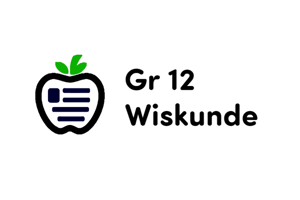Podcast
Questions and Answers
Consider an arithmetic sequence where the 7th term is 34 and the 12th term is 69. What is the common difference of this sequence?
Consider an arithmetic sequence where the 7th term is 34 and the 12th term is 69. What is the common difference of this sequence?
- 6
- 8
- 7 (correct)
- 5
In an arithmetic sequence, the first term is -5 and the common difference is 3. Which term in the sequence has a value of 40?
In an arithmetic sequence, the first term is -5 and the common difference is 3. Which term in the sequence has a value of 40?
- 16th (correct)
- 14th
- 15th
- 17th
The sum of the first 10 terms of an arithmetic sequence is 250. If the first term is 5, what is the common difference?
The sum of the first 10 terms of an arithmetic sequence is 250. If the first term is 5, what is the common difference?
- 3
- 6
- 4
- 5 (correct)
What three arithmetic means can be inserted between the numbers 8 and 24?
What three arithmetic means can be inserted between the numbers 8 and 24?
How many different ways can the letters of the word 'STATISTICS' be arranged?
How many different ways can the letters of the word 'STATISTICS' be arranged?
A committee of 4 people is to be formed from a group of 6 men and 5 women. What is the probability that the committee will consist of 2 men and 2 women?
A committee of 4 people is to be formed from a group of 6 men and 5 women. What is the probability that the committee will consist of 2 men and 2 women?
Two cards are drawn without replacement from a standard 52-card deck. What is the probability that the first card is a king and the second card is a queen?
Two cards are drawn without replacement from a standard 52-card deck. What is the probability that the first card is a king and the second card is a queen?
A restaurant offers 4 choices of appetizers, 6 choices of entrees, and 3 choices of desserts. If a customer is to select one of each, how many different meals are possible?
A restaurant offers 4 choices of appetizers, 6 choices of entrees, and 3 choices of desserts. If a customer is to select one of each, how many different meals are possible?
Flashcards
Common Difference
Common Difference
The constant difference between consecutive terms in an arithmetic sequence.
Finding the nth term
Finding the nth term
The nth term is found by adding (n-1) times the common difference to the first term: a + (n-1)d
Arithmetic Means
Arithmetic Means
Values inserted between two terms in an arithmetic sequence to form a new arithmetic sequence.
Permutation
Permutation
Signup and view all the flashcards
Combination
Combination
Signup and view all the flashcards
Probability
Probability
Signup and view all the flashcards
Probability of A and B
Probability of A and B
Signup and view all the flashcards
Counting Principle
Counting Principle
Signup and view all the flashcards
Study Notes
Arithmetic Sequence
- The common difference of the arithmetic sequence 5, 11, 17, 23,... is 6.
- The 10th term of the arithmetic sequence 2, 7, 12, 17,... is 47.
- Given an arithmetic sequence with a first term of 3 and a common difference of 4, the 8th term is 31.
- Given that the 5th term of an arithmetic sequence is 22 and the 10th term is 47, the first term is 2.
- The sum of the first 15 terms of an arithmetic sequence with a first term of 1 and a common difference of 3 is 345.
- Given that the sum of the first 20 terms of an arithmetic sequence is 950 and the common difference is 4, the first term is 2.
- Three arithmetic means inserted between 5 and 29 are 11, 17, and 23.
- Given that the sum of the first and last term of an arithmetic sequence is 42 and there are 10 terms in the sequence, the sum of all the terms is 210.
- In an arithmetic sequence where the 12th term is 52 and the 17th term is 77, the common difference is 5.
- Given an arithmetic sequence where the sum of the first and third term is 12 and the fifth term is 16, the first term is 2.
Permutations, Combinations, and Probability
- There are 120 (5!) ways to arrange 5 people in a line.
- There are 120 (10C3) ways to select 3 books from a shelf of 10 books.
- Given a bag containing 5 red marbles and 3 blue marbles, the probability of drawing a red marble is 5/8.
- The probability of getting two heads when a coin is tossed twice is 1/4.
- The probability of getting an even number when a die is rolled is 1/2.
- There are 24 (4!) different ways to arrange the letters in the word "MATH".
- There are 56 (8C3) different committees that can be formed when a committee of 3 people is selected from a group of 8 people.
- The probability of drawing two aces from a standard deck of 52 cards without replacement is 1/221.
- Given a box containing 5 red balls, 3 blue balls, and 2 green balls, the probability of drawing a blue ball is 3/10.
- A pizza parlor offering 3 types of crusts and 5 different toppings can make 15 (3 crusts * 5 toppings) different one-topping pizzas.
Studying That Suits You
Use AI to generate personalized quizzes and flashcards to suit your learning preferences.



